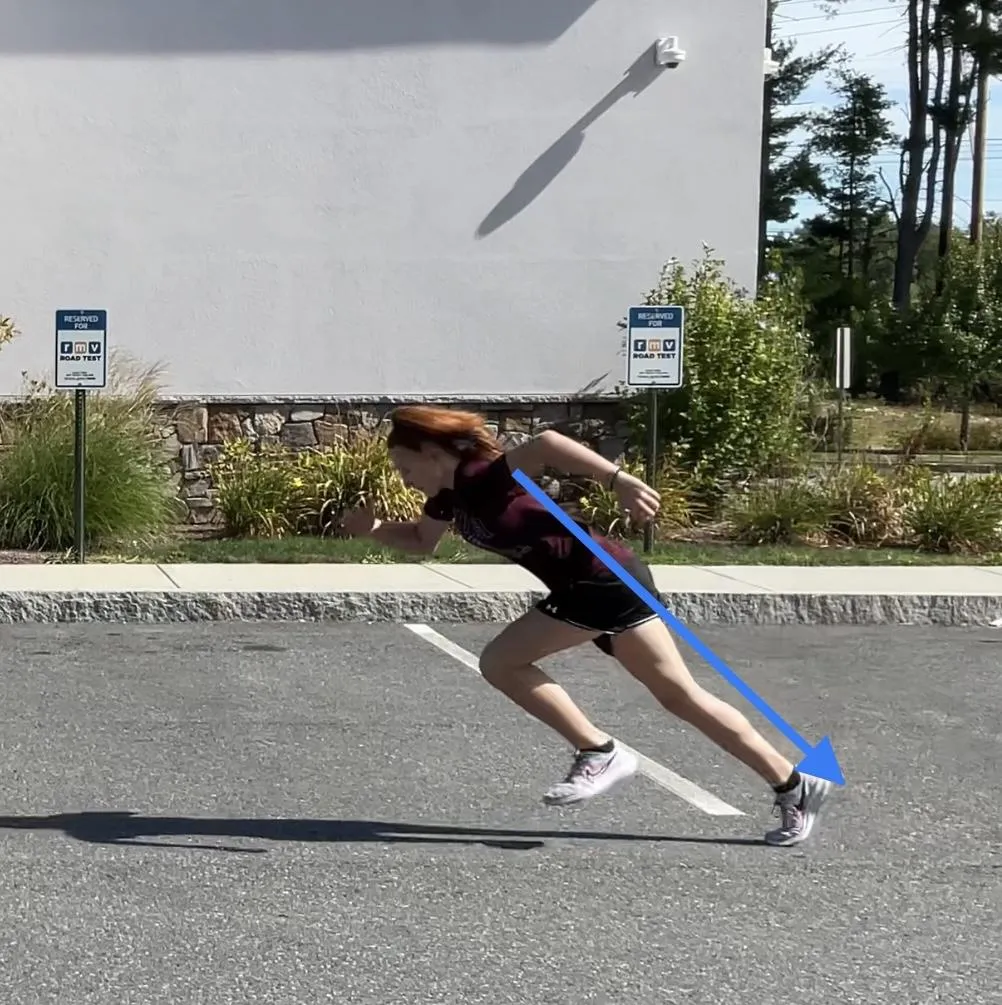ATHLETE BLOG LEOMINSTER

This Is What Successful Speed Training Actually Looks Like
“You can't train speed! Lol."
For about two years, this was the comment an older basketball coach used to leave on our social media posts when we announced speed clinics.
It's a special kind of frustration you feel when someone mocks your craft in a forum that doesn't lend itself well to thoughtful discussion.
The thing is, though, he was expressing what most people still believe about speed development.
Stretch a lot and you get more flexible.
Lift lots of weights and you get stronger.
Yet those who run all the time may never get faster.
Why is that?
It's complicated, sort of.
Stretching and lifting are controlled movements, done at a pace you can kind of feel your way through. Mastering proper form doesn't take long with the right guidance.
Full speed sprinting isn’t really like them at all. Everything happens too fast to know whether you're doing it right or not.
It’s more like learning to play the piano or guitar at a high level.
They’re all fine motor skills, highly complex tasks that require specific practice with a focused connection on how it feels.
Just as we know musicians get better at their craft with the right approach, so too can any athlete train to improve their speed.
With that in mind, I'd like to share with you my five most beneficial ways to improve speed through training.
Sprint, Don't Run
Tony Holler, perhaps the most successful high school track coach in the nation, believes that poor workout structure is the main reason why many fail to develop speed.
Holler routinely develops nationally ranked sprinters out of a small Illinois school by emphasizing short, all out sprints lasting no more than five seconds, followed by long rest periods.
His approach differs from most, who stress longer runs and shorter rest times.
Unless you sprint at 100% full capacity you'll never teach your body to move more efficiently at high speeds.
Running doesn't make you faster, only sprinting does.
Power Up with Resisted Sprinting
In 2022 we purchased a high-tech machine to analyze sprint data in simple terms so our kids could make better adjustments to their technique.
One example is the angle you push back into the ground during your first few strides.
We know that elite sprinters push back with 55-60% of their effort. Any more than that and they'd fall flat on their face.
Slower athletes push back with only 35-45% of their effort, which we see in many of our kids at first.
When you can get them to change that angle by even a couple of percentage points, they run faster.
Enter the world of resisted sprinting.
Pushing back against a slight resistance (5-30 lbs) forces a more horizontal push, eliminating the slower, flat footed landing.
Honestly, this makes it so much easier to fix acceleration that it’s almost unfair.
Emphasize Coordination Development
Speed expert Lee Taft believes maximizing your coordination development in your early years is the best way to become faster down the road.
The rhythm and coordination demands of sprinting are often overlooked, but should be at the heart of every speed workout.
The timing of your arm and leg switches on each stride.
The gradual changes in posture from acceleration to top speed.
These are just two of many tiny coordination improvements you can make to your stride.
Drills like A skips, B skips, high knee switches, and bear crawls are great for general coordination.
Angled wall starts, straight leg bounds other exercises attack specific pieces of sprint technique.
And when done correctly, assisted sprinting works best.
This is where you get pulled forward with just enough help to force your limbs to work together more efficiently, speeding up the frequency of your strides.
A Picture Really is Worth 1,000 Words
Teaching speed through video has been a game changer.
Modeled after a company named ALTIS, who works with many of the U.S. Olympic sprinters, we use freeze frame shots to show how kids look compared to elite athletes.
That awareness makes it much easier for them to know what to focus on in their next few runs.
Some of the more common things we look for are:
Leading with the shoulders instead of the hips
Not using your arms aggressively enough
Landing too far forward with your foot
Letting your trail leg hang out too long behind your body
Bigger mistakes can be fixed on the spot with beginners.
Our older athletes use this to fine tune smaller inefficiencies as they try to gain every last advantage on their competition.
What Coaches Say Can Turbo-Charge Results
This one is, admittedly, the most challenging part of coaching speed.
In his book "The Language of Coaching", world-class speed coach Nick Winkelman
cites new research showing how certain types of verbal feedback creates immediate improvements in sprinting that sticks.
"Punch your knees to the finish line."
"Explode out like a jet taking off."
Brief phrasing that paints a powerful mental image reprograms an athlete's imagery, helping them see a newer and better way to move.
When paired with video analysis, the right coaching cue helps the light go on in an instant.
I say it's challenging because there's no one phrase that works for everyone.
Something may unlock one athlete’s potential while doing nothing for the rest of the group.
When you hit on one that creates improvement on the spot, though, it's really cool!
I did invite my online coaching buddy to come and observe one of our speed sessions, so he could see all of this firsthand.
He of course did not reply, and never again commented on our announcements.
Which is too bad, because he’d have realized how 21st century athletes are able to make speed improvements that previous generations could not.
Power Source Reviews
© Copyright 2024. Power Source. All rights reserved.
|
